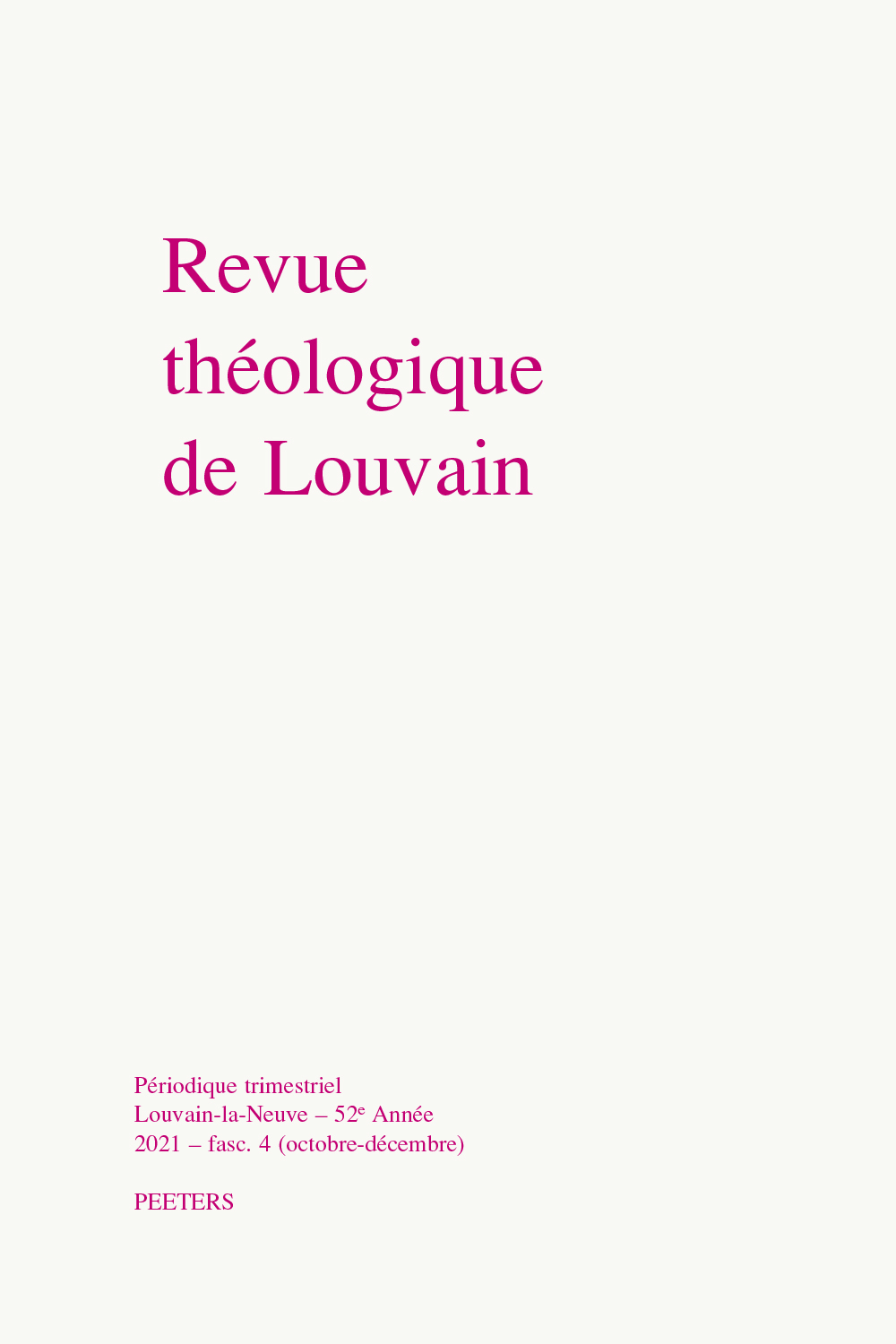 previous article in this issue previous article in this issue | next article in this issue  |

Preview first page |
Document Details : Title: Dieu-Père, Dieu-Mère et au-delà Subtitle: Constructions et déconstructions exégétiques d'Osée 11 Author(s): WACKER, Marie-Theres Journal: Revue Théologique de Louvain Volume: 48 Issue: 2 Date: 2017 Pages: 172-194 DOI: 10.2143/RTL.48.2.3220880 Abstract : Dans le monde germanophone, le développement de l’exégèse féministe en différents types de recherches en genre dans les études bibliques peut être reconstruit à partir de l’exemple du texte d’Os 11,1-11, un texte central pour la théologie biblique, mais difficile d’un point de vue linguistique. Cet article cherche à lier la présentation d’études déjà publiées avec des approches nouvelles propres à l’auteure. Dans un premier temps, les deux approches fondamentales de Jörg Jeremias (1983, position «classique») et de Helen Schüngel-Straumann (contrepoint féministe) sont présentées et situées dans le contexte de leur publication. Prolongeant ces approches critiques, diverses propositions de lectures reprennent chacune un aspect particulier du texte. Ainsi s’interroge-t-on sur le «langage corporel» en Os 11, puis sur la relation entre sexe et genre dans ce texte et, avec l’exemple de l’interprétation de Jürgen Ebach (2004), sur les objections formulées dans le cadre d’une recherche critique sur la masculinité. L’imagerie animale importante en Os 11 est éclairée dans son lien spécifique au genre, et enfin, la finale du livre d’Osée est interrogée à propos de ses implications sur le même point. In the German-speaking world, the development of feminist exegesis in different types of gender research in biblical studies can be reconstructed from the example of Hos 11:1-11, a text that is central for biblical theology, but difficult from a linguistic point of view. This article seeks to link the presentation of previously published studies with new approaches specific to the author. First, the two fundamental approaches of Jörg Jeremias (1983, «classical» position) and Helen Schüngel-Straumann (feminist counterpoint) are presented in the context of their publication. Beyond these critical approaches, various readings of the text center on a particular aspect: the «body language» in Hos 11, the relation between sex and gender in this text and, through the example of Jürgen Ebach’s interpretation (2004), on the objections formulated in the framework of a critical approach to masculinity. The important animal imagery in Hos 11 is considered in its gender-specific connection. Finally, from this perspective, the article looks at the implications of the end of the book of Hosea. |
|


